M159 i
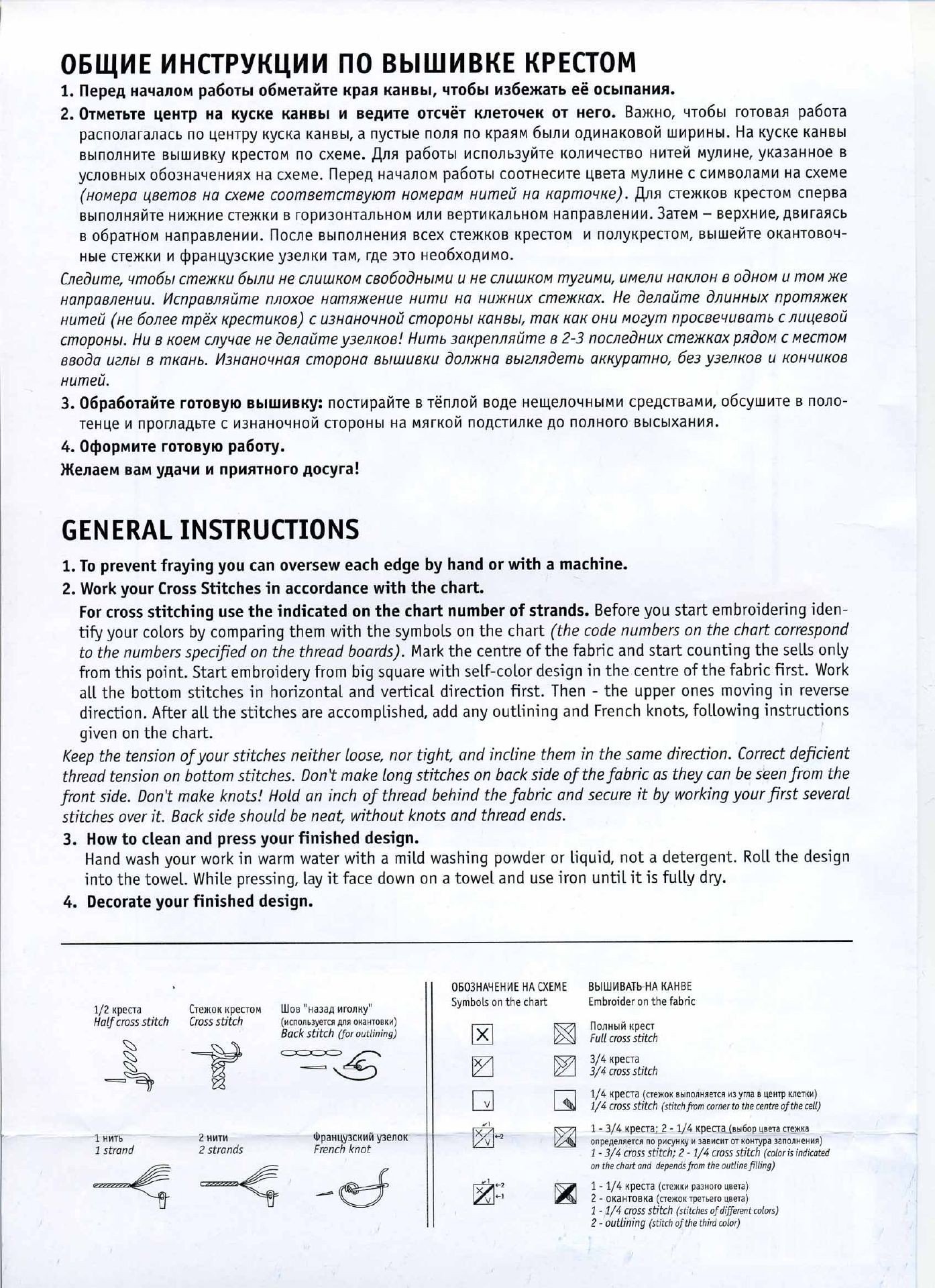
OBIUME MHCTPyKUMM nO BbllUMBKE KPECTOM
1. riepefl nana/ioM paóoTbi oÓMeTawie Kpan KaHBbi, mo6bi n36e>KaTb ee ocbinaHiifl.
2. OTMeTbTe uemp Ha Kycne KaHBbi u BeAtrre OTcneT mieToseK ot Hero. Ba>KHo, nioóbi roTOBan paóoia pacno/iara^acb no peHTpy Kyc«a KaHBbi, a nydbie no/in no KpaaM 6bmn oahh3kobom wnpnHbi. Ha KycKe KaHBbi Bbino/iHHTe BbiniHBKy KpecTOM no cxeMe. fl/ia paóoTbi ncno/ib3ynTe ko/ihhsctbo Hmen My/iHHe, yKa3aHHoe b ycAOBHbix o6o3HaHeHHjix Ha cxeMe. riepefl Hana/iOM paóoTbi cooTHecme UBeia My/iMHe c CHMBO/iaMM Ha cxeMe (HOMepo peemoe Ha cxeMe coomBemcmeyiom HOMspaM Humeu Ha HapmoHKe). fl/in cre>KKOB KpecTOM cnepBa BbinOflHBMTe HH)KHHe CTe>KKH B ropM30HTa^bHOM HJ1H BepTMKa/lbHOM HanpaB/IGHHH. 3aTeM - BepXHHe, ABHraBCb b oópaTHOM HanpaBneHMH. nocne Bbino/iHeHHB Bcex ctg>kkob KpecTOM u no/iyKpecTOM, BbiwePiTe oKaHTOBOH-Hbie CTe>KKM m cj}paHpy3CKne y3e/iKn TaM, rfle 3to Heo6xoAHMo.
Cnedume, nmoóbt cmewKU 6bmu He c/iulukom CBOĆodHbiMU u He c/iuuikom myeuMU, UMe/iu hokjioh b o5hom u itiom we HanpaB/ieHuu. klcnpaBnnume rwoxoe HammneHue Humu ho hldkhux cmewKax. He denaume d/iuHHbix npommeK Humeu (He 6onee mpex Kpecmunoe) c U3hohohhou cmopoHbi KaHBbi, man kok ohu Moeym npocBeuueamb c nugeBou cmopoHbi. Hu b KoeM c/iynae He de/iaume y3e/iKoe! Humb 3aKpen/mume b 2-3 nocnedHux cme>KKax pndoM c MecmoM Bsoda us/ibi b mKaHb. l/]3HaHOHHan cmopona BbiuiuBKU donmHa Bbiznfldemb aKKypamno, 6e3 y3e/iK08 u kohhukob Humeu.
3. 06pa6oiaMTe roTOByio BbiimiBKy: nocTHpawie b Ten/iow BOfle HemenoHHbiMH cpeflCTBaMH, oócymme b no/io-TeHpe u npomaAbTe c n3HaHOHHOM cropoHbi Ha matkom noACTH/iKe ao no/iHoro BbicbixaHHA.
4. 0(|)opMMTe roTOByio paóoiy.
WenaeM aaM yflanM u npunTHoro flocyra!
GENERAL INSTRUCTIONS
1. To prevent fraying you can oversew each edge by hand or with a machinę.
2. Work your Cross Stitches in accordance with the chart.
For cross stitching use the indicated on the chart number of strands. Before you start embroidering iden-tify your colors by comparing them with the symbols on the chart (the codę numbers on the chart correspond to the numbers specified on the thread boards). Mark the centre of the fabric and start counting the sells only from this point. Start embroidery from big square with self-color design in the centre of the fabric first. Work all the bottom stitches in horizontal and vertical direction first. Then - the upper ones moving in reverse direction. After all the stitches are accomplished, add any outlining and French knots, following instructions given on the chart.
Keep the tension ofyour stitches neither loose, nor tight, and incline them in the same direction. Correct deficient thread tension on bottom stitches. Don't make long stitches on back side of the fabric as they can be seen from the front side. Don't make knots! Hołd an inch of thread behind the fabric and secure it by working your first several stitches over it. Back side should be neat, without knots and thread ends.
3. How to clean and press your finished design.
Hand wash your work in warm water with a mild washing powder or liquid, not a detergent. Roli the design into the towel. While pressing, lay it face down on a towel and use iron until it is fully dry.
4. Decorate your finished design.
0603HAHEHHE HA CXEME BbILUMBATb HA KAHBE Symbols on the chart Embroider on the fabric
1/2 Kpecra Half cross stitch
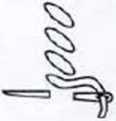
Ctokok KpecTOM Cross stitch
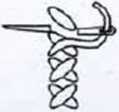
LUob "Ha3afl urójmy" (ncno/ib3yercfl aa* ok3htobkh) Back stitch (for outlining)


nojiHbiti KpecT i^J Fuli cross stitch
3/4 KpecTa
(Z 3/4 cross stitch
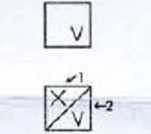

1/4 KpecTa (aejKOK Bbino/iHaeTCfl H3yma b uemp icneTKu) 1/4 cross Stitch (stitch from corner to the centre ofthe celt)

1 HMTb
1 strand
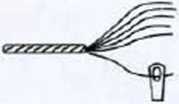
2 HMTM
2 strands

ti>paHny3CKMii y3enoK French knot


1 - 3/4 KpecTa; 2-1/4 Kpecra (Buóop useTa crewKa onpefleARercR no pucyHKy m 3aBncnr ot KOHTypa aanojiHeHWfl)
1 - 3/4 cross stitch; 2 -1/4 cross stitch (coloris indicated on the chart and depends from the outline filling)
1 -1/4 KpecTa (crejKKH pa3noro UBeia)
2 - OKaHTOBKa (ctokok TpeTbero UBeia)
1-1/4 cross stitch (stitches ofdifferent colors) 2 - outlining (stitch of the third color)
Wyszukiwarka
Podobne podstrony:
M158 i OElflME MHCTPyKUMM nO BbllUMBKE KPECTOM 1. riepefl, Hana/ioM paóoTbi o6MeTa
M157 i OELUME MHCTPyKUMM no BbllllMBKE KPECTOM 1. riepefl Hana/ioM pa6oibi oÓMeiaM
M156 i OBLUME MHCTPyKUMM no BbILUMBKE KPECTOM 1. nepen Hana^OM pa6orbi oÓMeTaiue w
x7 OÓLUMe MHCTpyKl4MM HO BbllUMBKe KpeCTOM. 1. riepea HananoM pa6oTw o6MeTatiTe Kp
Instr02 (6) MHCTpyKMMfi no c6opKe flaHHyto MOflenb mo>kho BbinonHMTb b flByx CTeneH«x cjio>kho
a (458) RIOLISCross stitch kit Ha6op A/1$< BblLUMBaHliS KpeCTOM Finished size 81/t" x 6"
No. Nana Variabel Mo. Pertanyaan ItOTi No. Kolom ssssssssssssss Nivar LENCJMOD 29. Apakah
33388883338888538888S3CS=3S3S83SS88S83333S3Sa83SSSS8S38SSS3 No. Nana Variabel No.
więcej podobnych podstron